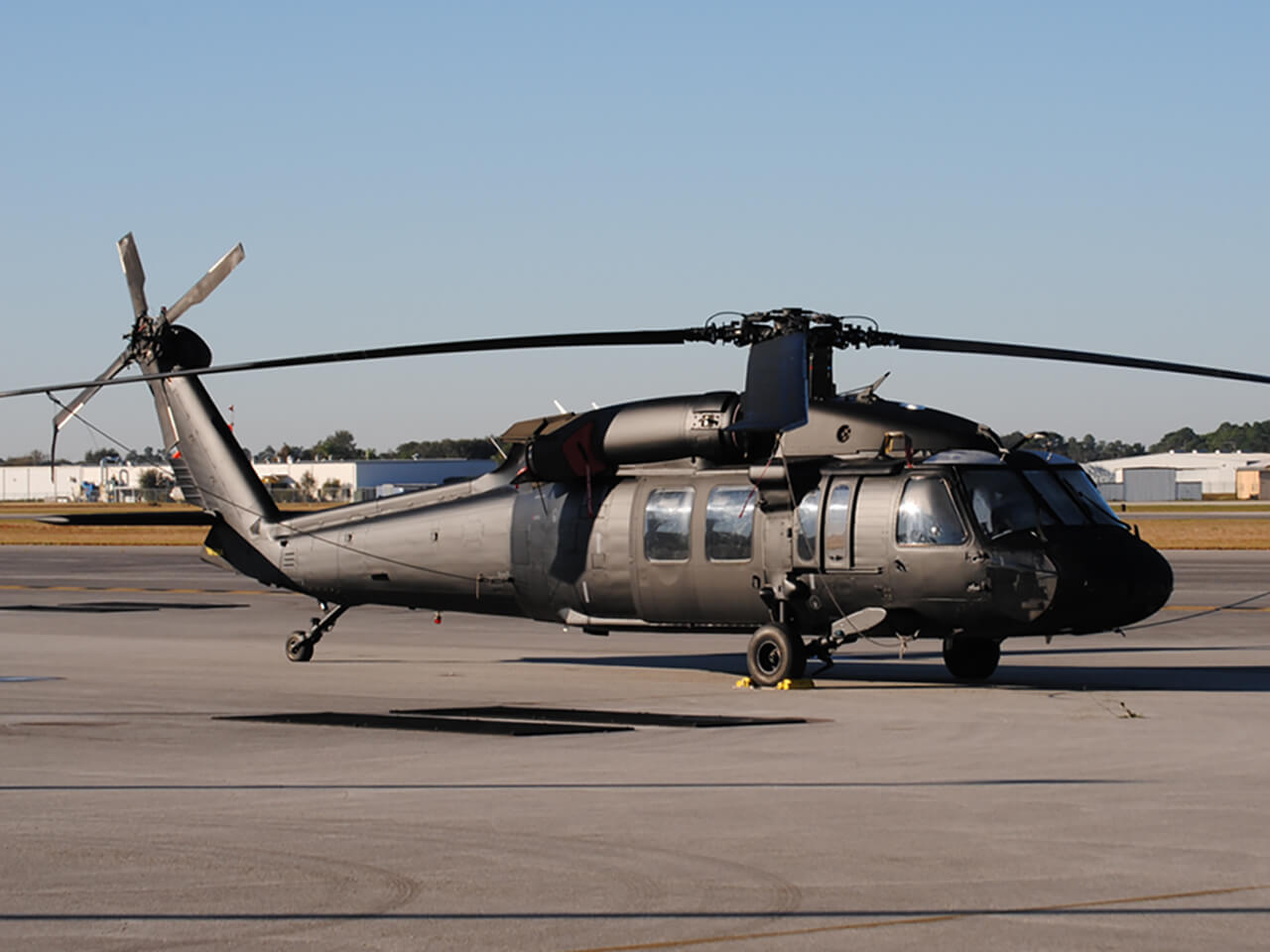Key Components of UH-60 Components and Their Function in Helicopter Performance
The efficiency of the UH-60 helicopter is intricately connected to its key parts, each playing a vital duty in its general capacities. Notably, the sophisticated blades system enhances lift and ability to move, while the avionics suite ensures exceptional navigating and interaction. The powerplant, including the T700-GE-701C engine, supplies the necessary horse power for numerous missions. The dynamics of these elements expand beyond simple functionality, influencing operational effectiveness in real-world situations. Recognizing exactly how each component interacts can light up the underlying principles that make the UH-60 a reliable asset in varied atmospheres. What lies below this integration?
Blades System
At the heart of the UH-60 helicopter's efficiency exists its blades system, a complex assembly made for optimum lift and ability to move. The rotor system contains a primary blades and a tail blades, each engineered to meet the requiring requirements of army and civilian aeronautics.
The primary rotor features a four-blade arrangement, constructed from advanced composite products that make certain strength and decrease weight. This layout boosts the helicopter's lift capabilities, enabling it to run effectively in different settings and problems - uh 60 parts. The rotor blades are also furnished with a distinct airfoil layout, optimizing wind resistant effectiveness and improving general performance
The tail rotor serves a vital feature in neutralizing the torque created by the primary blades. It uses a two-blade layout that gives security and control during trip. The tail rotor's design decreases noise and resonance, adding to an extra comfortable experience for staff and travelers alike.
In addition, the blades system integrates innovative control devices, including a totally expressed blades head that enables exact adjustments during flight. This capability makes certain dexterity and responsiveness, which are crucial for goal success in vibrant operational circumstances.

Avionics Collection
The avionics suite of the UH-60 helicopter represents an advanced assimilation of digital systems that boost interaction, flight, and navigating monitoring. This collection consists of sophisticated technologies such as the International Positioning System (GPS), which offers specific placing data necessary for mission preparation and execution. The navigation system is further matched by inertial navigation systems (INS) that make sure trusted performance even in GPS-denied environments.

Additionally, the flight administration system (FMS) simplifies different trip operations by automating tasks such as course planning, fuel management, and performance estimations. This not just enhances functional performance but also minimizes pilot work, allowing them to focus on crucial objective goals.
Powerplant Elements
Incorporating cutting-edge modern technology and design, the powerplant parts of the UH-60 helicopter are essential for its performance and dependability. At the heart of the powerplant is the T700-GE-701C turboshaft engine, known for its exceptional power-to-weight ratio and operational performance. This engine provides 1,800 shaft horsepower, allowing the UH-60 to carry out diverse goals, from army transportation to medical emptying.
The powerplant system consists of critical parts such as the transmission, which assists in the conversion of engine power into rotor drive, and the fuel system, making sure optimal fuel shipment and management. Additionally, the exhaust system plays a vital duty in warm dissipation and minimizing infrared trademarks, boosting the helicopter's survivability in battle circumstances.
Additionally, the powerplant's innovative control systems make it possible for real-time surveillance of engine performance, permitting quick diagnostics and maintenance. This assimilation of technology boosts operational preparedness and integrity, making the UH-60 a powerful asset in different atmospheres. The harmony between these powerplant components not only makes best use of efficiency yet likewise adds to the general mission success of the helicopter, emphasizing its significance in modern-day army procedures.
Body Framework
Building upon the robust powerplant system, the fuselage structure of the UH-60 helicopter plays a considerable role in its total capability and mission capabilities - uh 60 parts. The body serves as the central structure that houses vital parts such as avionics, fuel systems, and crew terminals, guaranteeing that these elements are ideally incorporated for efficient operation
Constructed mainly from light weight aluminum alloys and composite products, the fuselage is designed to provide a light-weight yet sturdy structure that can hold up against the anxieties of flight and adverse environmental conditions. Its aerodynamic form decreases drag, adding to enhanced gas efficiency and boosted flight performance.
Furthermore, the fuselage structure is geared up with functions that boost survivability, find out this here consisting of energy-absorbing materials and ballistic security, which are essential for missions in aggressive settings. The design of the fuselage also facilitates fast accessibility to upkeep points, promoting operational readiness and reducing downtime.
In addition, the layout permits modular arrangements, making it possible for the UH-60 to adapt to different mission accounts, from army transportation to medical emptying - uh 60 parts. On the whole, the body framework is a critical part that directly influences the helicopter's versatility and performance in satisfying diverse operational demands

Landing Gear System
A critical element of the UH-60 helicopter, the landing gear system is developed to supply stability and support throughout touchdown, ground, and departure procedures. This system normally consists of a tricycle arrangement, including 2 primary wheels found under a tail and the body wheel or skid, depending on the certain variant.
Created from high-strength products, the landing gear is crafted to take in substantial influence forces during landings, making sure team safety and maintaining the architectural integrity of the helicopter. The layout permits quick implementation and retraction, helping with efficient ground pop over to this site handling and decreasing drag throughout trip.
Furthermore, the touchdown equipment system integrates shock absorbers, which are essential view publisher site for boosting and reducing vibrations passenger comfort. These components are vital in maintaining ideal performance and stability, particularly in rough surface or negative weather condition conditions.
Normal maintenance and inspection of the landing gear system are vital to ensure its integrity and functionality. Any type of shortages can bring about jeopardized safety and functional efficiency, underscoring the value of this component in the overall performance of the UH-60 helicopter.
Conclusion
In final thought, the UH-60 helicopter's performance is delicately connected to its vital components, consisting of the sophisticated blades system, advanced avionics collection, powerful T700-GE-701C engine, lightweight fuselage structure, and robust landing equipment. Each element plays an essential role in improving lift, ability to move, navigating, and overall functional efficiency. The assimilation of these components makes sure the UH-60's convenience throughout varied mission accounts and settings, strengthening its standing as a critical asset in modern aerial operations.
Significantly, the innovative rotor system improves lift and maneuverability, while the avionics suite makes certain superior navigation and communication.The avionics suite of the UH-60 helicopter represents an innovative combination of electronic systems that improve navigation, flight, and communication monitoring. The navigation system is additional complemented by inertial navigation systems (INS) that make sure trusted performance even in GPS-denied atmospheres.
Moreover, the powerplant's advanced control systems make it possible for real-time monitoring of engine performance, permitting for quick diagnostics and maintenance.In verdict, the UH-60 helicopter's efficiency is delicately connected to its essential elements, consisting of the sophisticated rotor system, advanced avionics suite, powerful T700-GE-701C engine, light-weight body framework, and robust touchdown equipment.